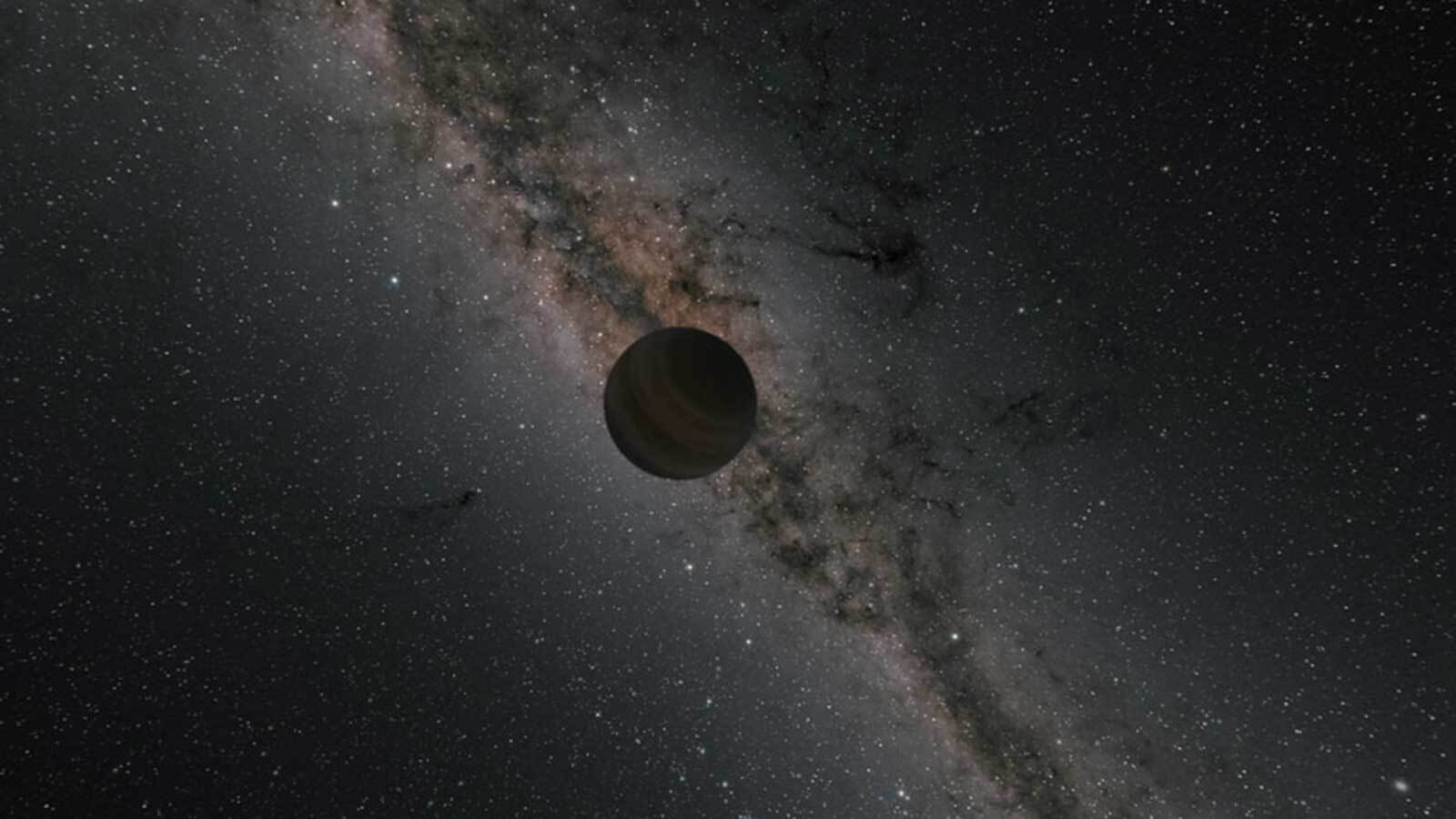One of the first observational tests of general relativity was that the path of light bends in the presence of mass. Not only refracts the way light changes direction as it enters glass or other transparent materials, but bends along a curved bath. This effect is central to a range of physical phenomena, from black holes to gravitational lensing to observations of dark matter. But because the effect is so tiny on human scales, we can’t study it easily in the lab. That could change in the future thanks to a new discovery using distorted photonic crystals.
Continue reading “This Photonic Crystal Bends Light Like a Black Hole”Astronomers Find a Rare “Einstein Cross”
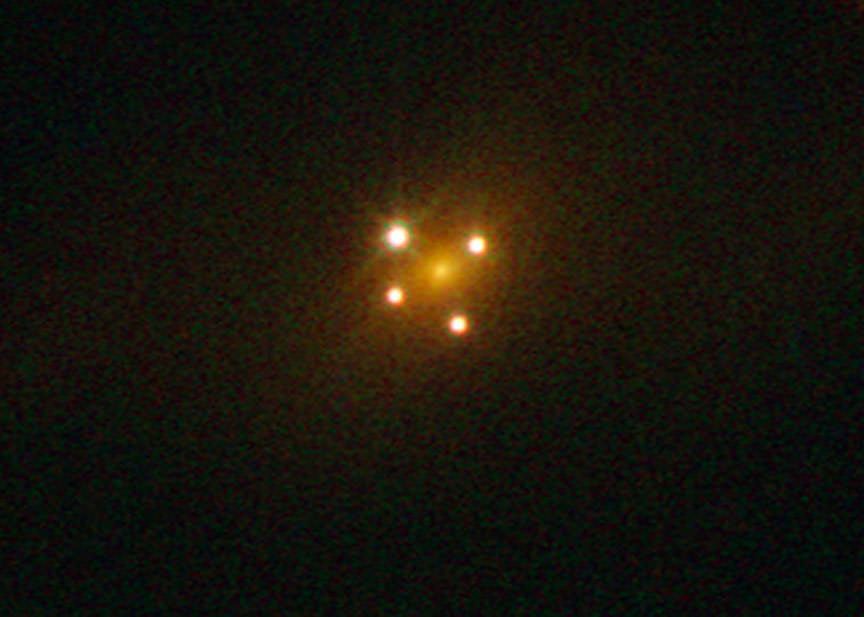
Gravitational lensing is one of astronomy’s great wonders: a natural lens that magnifies the distant universe. Sometimes a lensing system takes the shape of a so-called “Einstein Cross”. Those are rare and amazingly useful ways to study objects far away in space and time.
Continue reading “Astronomers Find a Rare “Einstein Cross””Astronomers See the Same Supernova Four Times Thanks to a Gravitational Lens
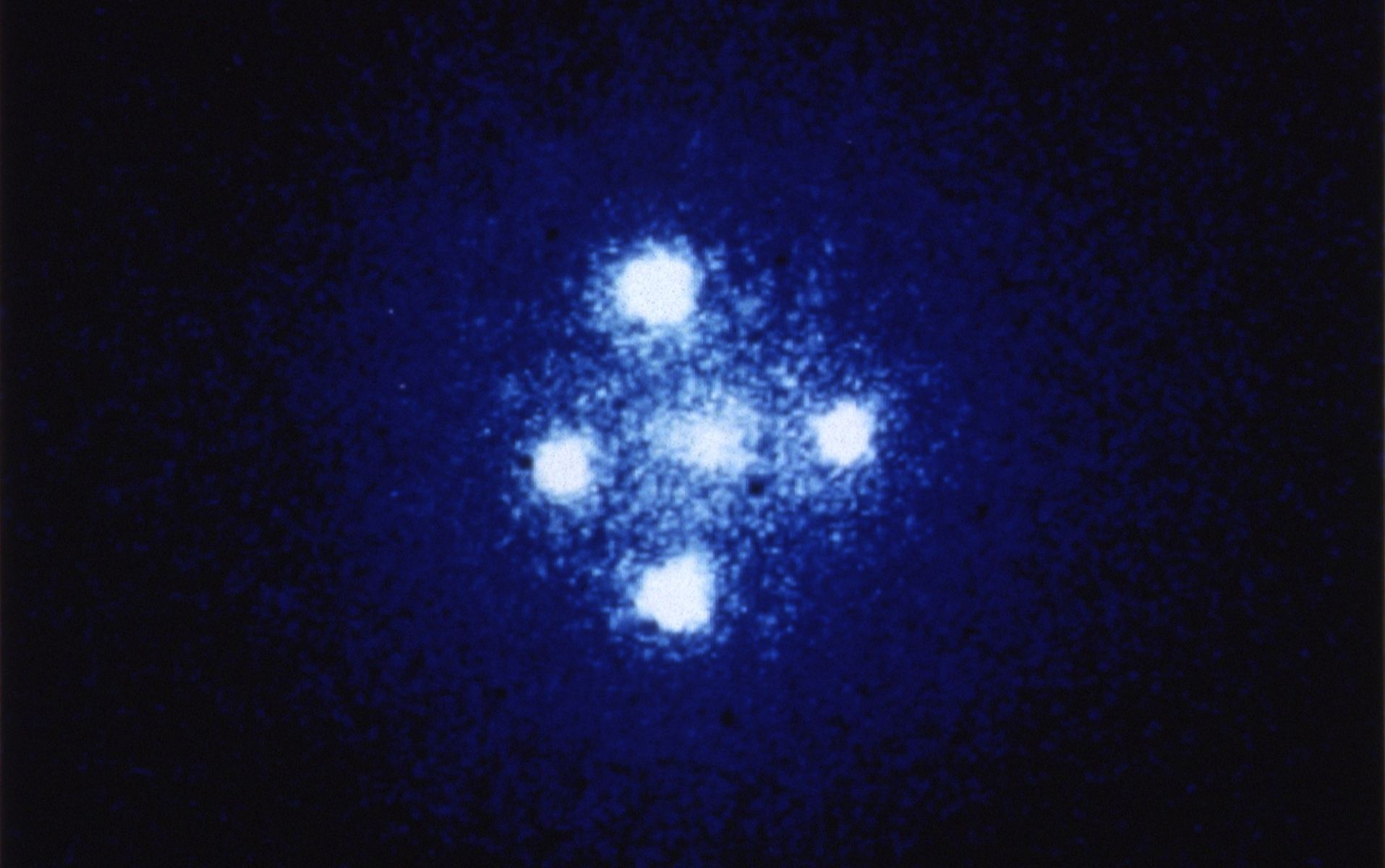
Measuring cosmic distances is challenging, and astronomers rely on multiple methods and tools to do it – collectively referred to as the Cosmic Distance Ladder. One particularly crucial tool is Type Ia supernovae, which occur in binary systems where one star (a white dwarf) consumes matter from a companion (often a red giant) until it reaches the Chandrasekhar Limit and collapses under its own mass. As these stars blow off their outer layers in a massive explosion, they temporarily outshine everything in the background.
In a recent study, an international team of researchers led by Ariel Goobar of the Oskar Klein Centre at Stockholm University discovered an unusual Type Ia supernova, SN Zwicky (SN 2022qmx). In an unusual twist, the team observed an “Einstein Cross,” an unusual phenomenon predicted by Einstein’s Theory of General Relativity where the presence of a gravitational lens in the foreground amplifies light from a distant object. This was a major accomplishment for the team since it involved observing two very rare astronomical events that happened to coincide.
Continue reading “Astronomers See the Same Supernova Four Times Thanks to a Gravitational Lens”Gravitational Lensing is Helping to Nail Down Dark Matter
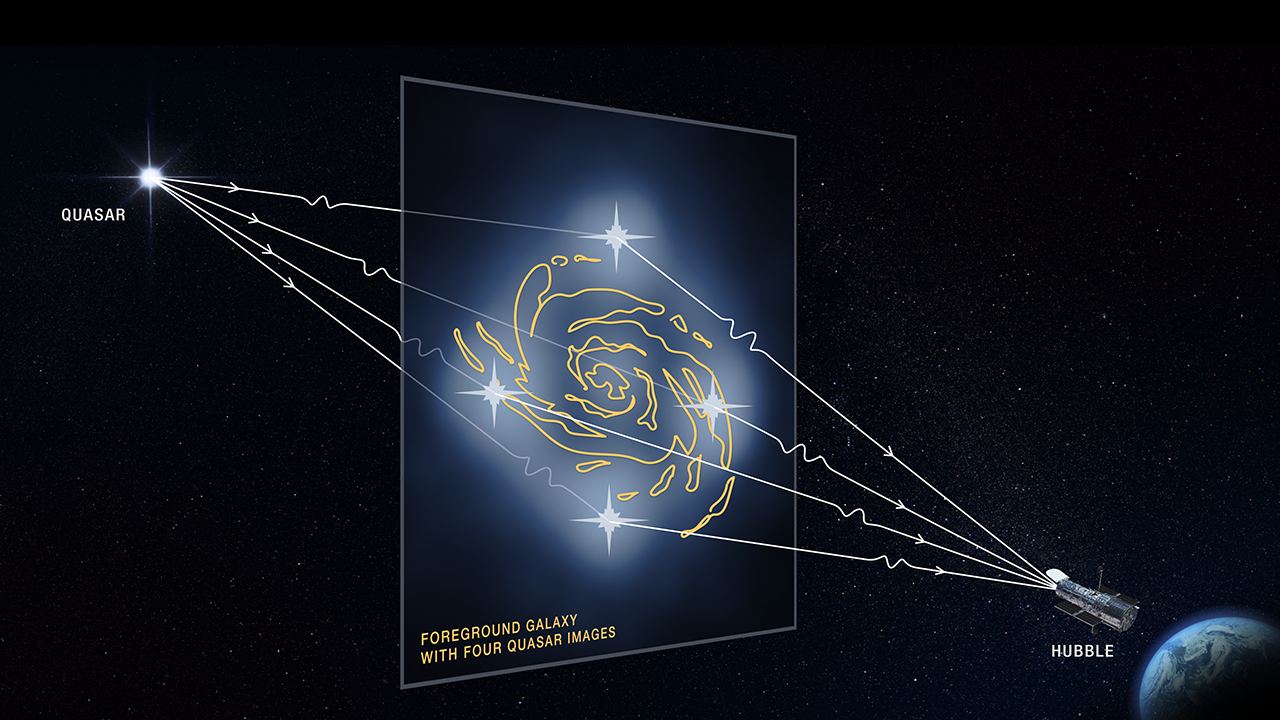
According to the most widely-accepted cosmological model, the majority of the mass in our Universe (roughly 85%) consists of “Dark Matter.” This elusive, invisible mass is theorized to interact with “normal” (or “visible”) matter through gravity alone and not electromagnetic fields, neither absorbing nor emitting light (hence the name “dark”). The search for this matter is ongoing, with candidate particles including Weakly-Interacting Massive Particles (WIMPs) or ultralight bosons (axions), which are at opposite extremes of the mass scale and behave very differently (in theory).
This matter’s existence is essential for our predominant theories of gravity (General Relativity) and particle physics (The Standard Model) to make sense. Otherwise, we may need to radically rethink our theories on how gravity behaves on the largest of scales (aka. Modified Gravity). However, according to new research led by the University of Hong Kong (HKU), the study of “Einstein Rings” could bring us a step closer to understanding Dark Matter. According to their paper, the way Dark Matter alters the curvature of spacetime leaves signatures that suggest it could be made up of axions!
Continue reading “Gravitational Lensing is Helping to Nail Down Dark Matter”Astronomers Think They've Found One of the Biggest Black Holes Ever Seen
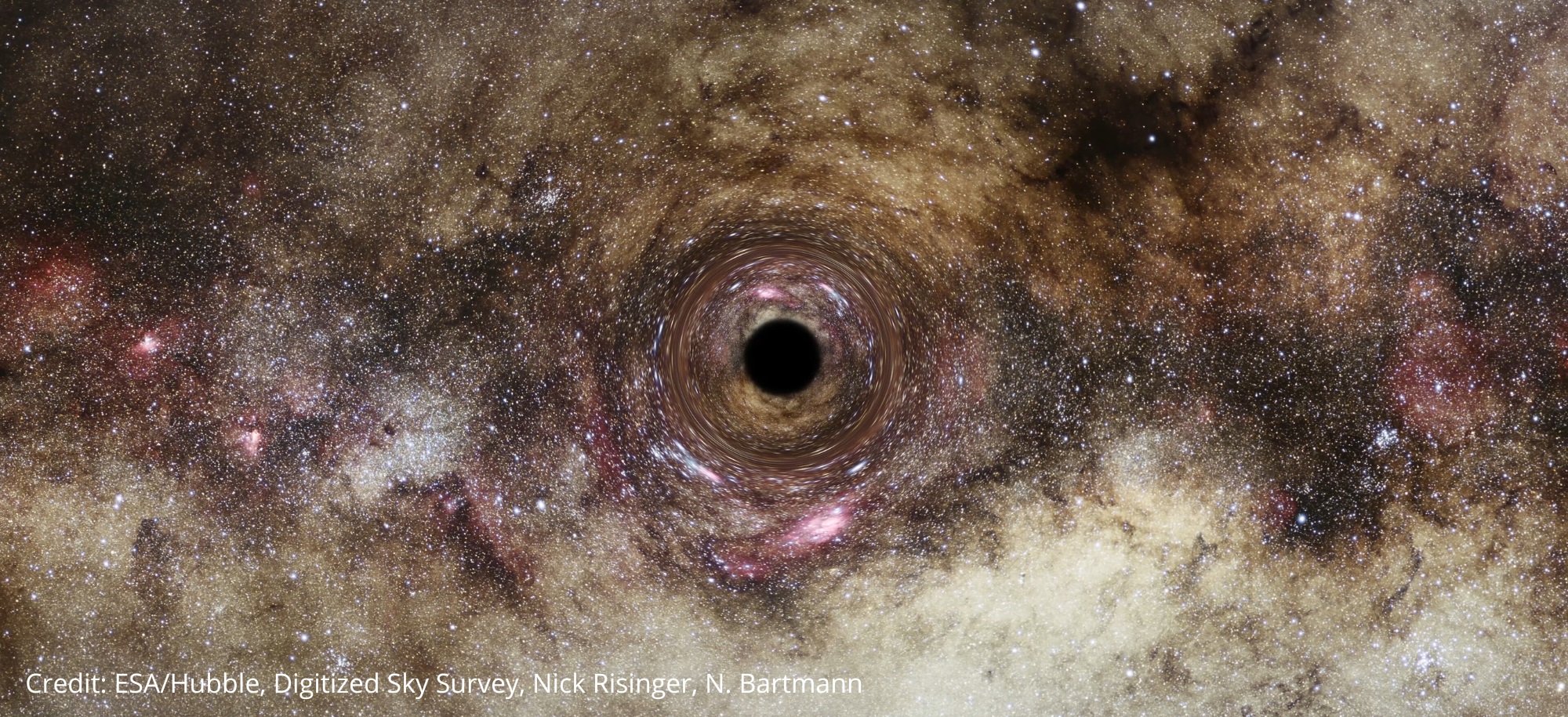
In 1931, Indian-American physicist Subrahmanyan Chandrasekhar proposed a resolution to Einstein’s Theory of General Relativity that postulated the existence of black holes. By 1972, astronomers obtained the first conclusive evidence that these objects existed in our Universe. Observations of quasars and the center of the Milky Way also revealed that most massive galaxies have supermassive black holes (SMBHs) at their cores. Since then, the study of black holes has revealed that these objects vary in size and mass, ranging from micro black holes (MBHs) and intermediate black holes (IMBHs) to SMBHs.
Using astronomical simulations and a technique known as Gravitational Lensing, an international team of astrophysicists detected what could be the largest black hole ever observed. This ultramassive black hole (UMBH) has a mass roughly 30 billion times that of our Sun and is located near the center of the Abell 1201 galaxy cluster, roughly 2.7 billion light-years from Earth. This is the first time a black hole has been found using Gravitational Lensing, and it could enable studies that look farther into space to find black holes and deepen our understanding of their size and scale.
Continue reading “Astronomers Think They've Found One of the Biggest Black Holes Ever Seen”A Rogue Earth and Neptune Might Have Been Found in Older Data
Scientists have found what appear to be rogue planets hidden in old survey data. Their results are starting to define the poorly-understood rogue planet population. In the near future, the Nancy Grace Roman Space Telescope will conduct a search for more free-floating planets, and the team of researchers developed some methods that will aid that search.
Continue reading “A Rogue Earth and Neptune Might Have Been Found in Older Data”A Novel Propulsion System Would Hurl Hypervelocity Pellets at a Spacecraft to Speed it up
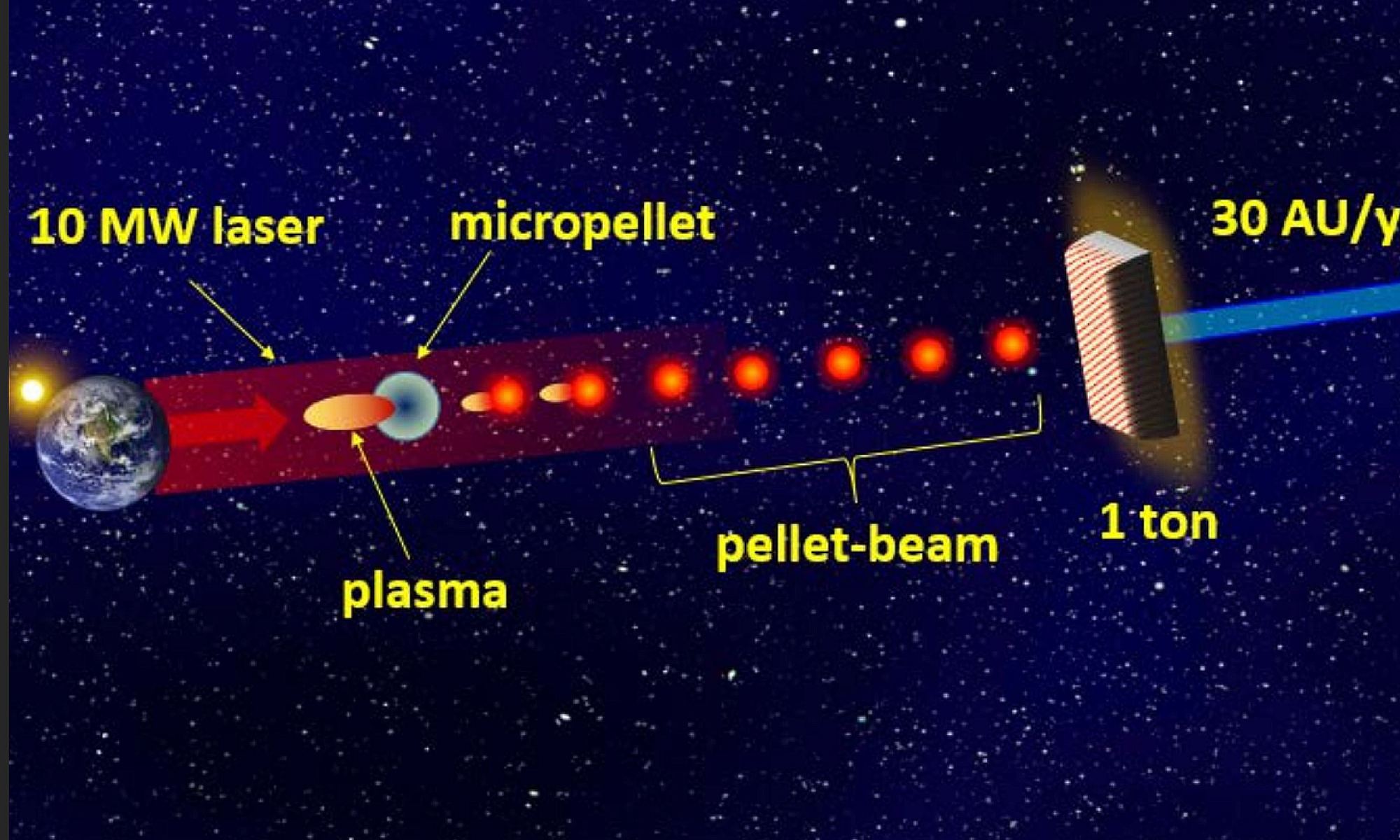
Today, multiple space agencies are investigating cutting-edge propulsion ideas that will allow for rapid transits to other bodies in the Solar System. These include NASA’s Nuclear-Thermal or Nuclear-Electric Propulsion (NTP/NEP) concepts that could enable transit times to Mars in 100 days (or even 45) and a nuclear-powered Chinese spacecraft that could explore Neptune and its largest moon, Triton. While these and other ideas could allow for interplanetary exploration, getting beyond the Solar System presents some major challenges.
As we explored in a previous article, it would take spacecraft using conventional propulsion anywhere from 19,000 to 81,000 years to reach even the nearest star, Proxima Centauri (4.25 light-years from Earth). To this end, engineers have been researching proposals for uncrewed spacecraft that rely on beams of directed energy (lasers) to accelerate light sails to a fraction of the speed of light. A new idea proposed by researchers from UCLA envisions a twist on the beam-sail idea: a pellet-beam concept that could accelerate a 1-ton spacecraft to the edge of the Solar System in less than 20 years.
Continue reading “A Novel Propulsion System Would Hurl Hypervelocity Pellets at a Spacecraft to Speed it up”In a New Hubble Image, Dark Matter Anchors the Giant Galaxy Cluster Abell 611
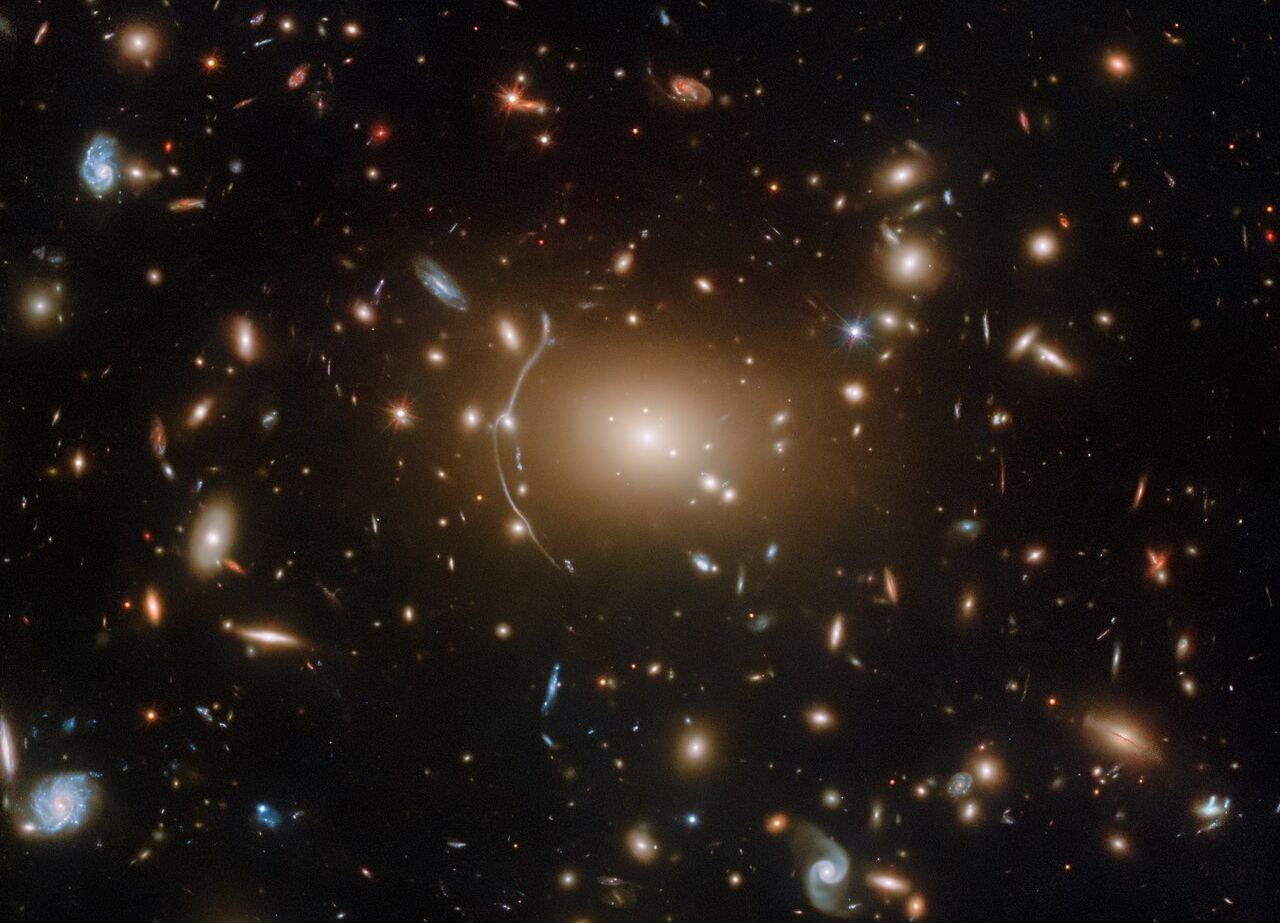
Dark matter. It’s secret. It’s dark because it doesn’t give off any light. We can’t see it, taste it, touch it, smell it, or even feel it. But, astronomers can measure this dark secret of the universe. How? By looking at galaxies and galaxy clusters. Dark matter exerts a gravitational influence on those regions, and that CAN be measured.
Continue reading “In a New Hubble Image, Dark Matter Anchors the Giant Galaxy Cluster Abell 611”Webb and Hubble Work Together to Reveal This Spectacular Galaxy Pair — and Several Bonuses!

What’s better than a pair of galaxies observed by a pair of iconic space telescopes? The answer to that, according to researchers using the Hubble and James Webb Space Telescopes, is finding even more galaxies and other remarkable details no one expected in the duo’s observations.
“Galaxies in the foreground, background, deep background, and into the depths,” said astronomer William Keel from Galaxy Zoo, on Twitter.
Continue reading “Webb and Hubble Work Together to Reveal This Spectacular Galaxy Pair — and Several Bonuses!”A Computer Algorithm is 88% Accurate in Finding Gravitational Lenses
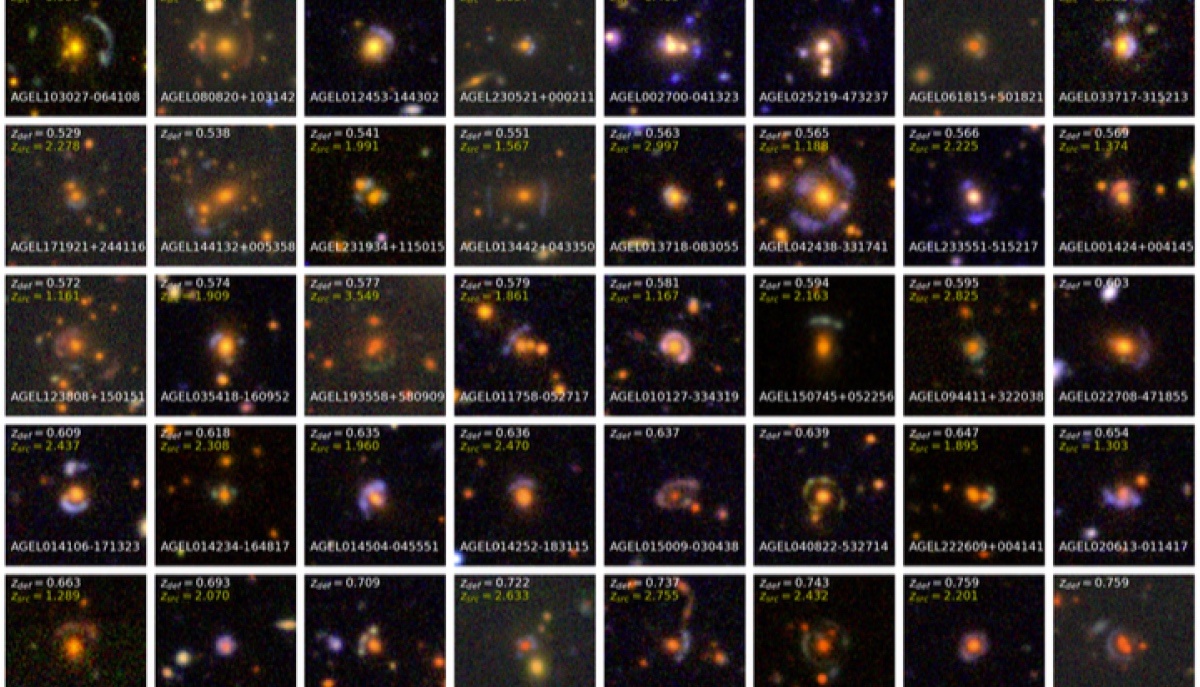
Astronomers have been assessing a new machine learning algorithm to determine how reliable it is for finding gravitational lenses hidden in images from all sky surveys. This type of AI was used to find about 5,000 potential gravitational lenses, which needed to be confirmed. Using spectroscopy for confirmation, the international team has now determined the technique has a whopping 88% success rate, which means this new tool could be used to find thousands more of these magical quirks of physics.
Continue reading “A Computer Algorithm is 88% Accurate in Finding Gravitational Lenses”

